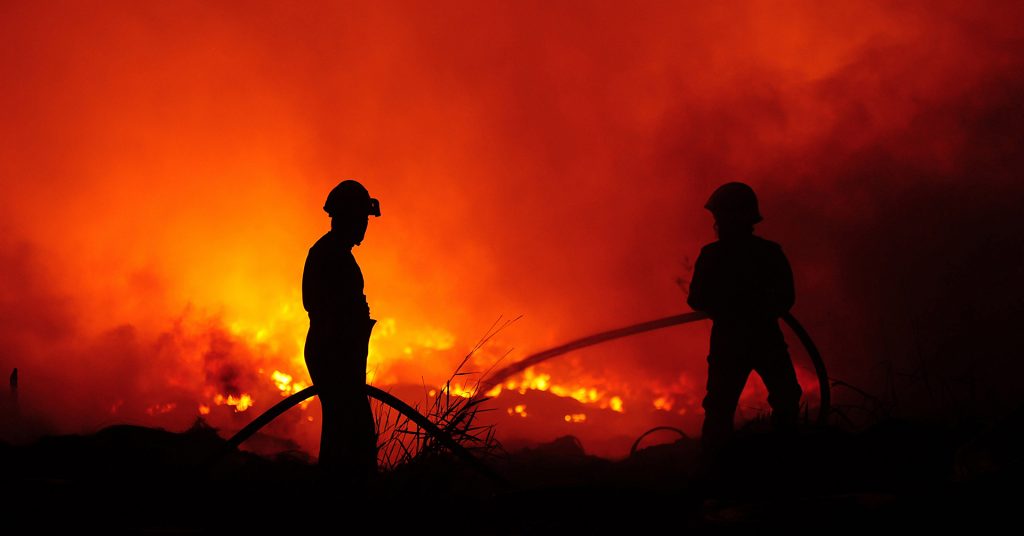
Following the devastating 2019/20 bushfires the NSW government commissioned an independent expert inquiry to provide input for planning ahead of the next bushfire season. The following article is from the Blue Mountains Greens’ Climate Action and Species Extinction Working Group submission to the NSW independent bushfire inquiry May 2020. For the full text of this submission CLICK HERE.
Greens NSW Bush Fire Risk Management Policy
Bushfires and climate-fuelled disasters
Jan Ardill and Noel Willis, Blue Mountains Greens
Residents of the Blue Mountains community located around the Great Western Highway, with its City Council based in Katoomba, have experienced bushfires going back decades into the 1950s and earlier. Many of us have grown up in the mountains. We are familiar with the stories of homes lost, evacuations of children and elderly neighbours, fires impacting street to street, and the familiar pathways followed by bushfires through the years.
Tragically, the Greater Blue Mountains World Heritage Area (which incorporates the Blue Mountains National Park) was massively impacted by the 2020 bushfires with over 75 per cent “fully or partly burnt… impacting an estimated 135 million mammals, birds and reptiles.”1
We subscribe to the belief that humans are a part of nature rather than nature existing for the use of humans. This informs our desire to see the bushfire toll on indigenous flora and fauna given equal consideration alongside damage to human lives and settlement. Significant resources must be put into research into the role played by human activity (individuals and institutions) in causing these megafires, including the relationship with climate change.
For too long our affluent way of life has depended on the exploitation of Australian natural resources which we found intact 200 years ago and have diminished irreparably. We have failed to acknowledge the contribution which our natural environment makes towards human survival, both locally and globally. The evidence and research is available, if we just look for it. We are now paying the price of this failure.
In 2018, Blue Mountains City Council (BMCC) joined the Cities Power Partnership (CPP) scheme created by the Australian Climate Council to foster the creation of “regional climate solutions”. The CPP is becoming a significant element in the reduction of the nation’s emissions given the policy vacuum and inaction in the Federal political sphere.
In March, 2019, at the instigation of Greens Councillors, BMCC became the third local Council in NSW to declare a Climate Emergency.
There are several key elements which increase the risk faced by suburban communities in the Blue Mountains:
- There is only one main road along the central ridge, the Great Western Highway, which links the mountains’ villages from east to west.
- In spite of all that has been said and written following bushfires in the past, new homes continue to be built on western-facing ridges, most often with only one road leading in and out, towards the highway.
- There are very few householders in the Blue Mountains with water tanks sufficiently large to make a contribution to fire-fighting efforts.
Regarding the issuing of public warnings, the improved role of the ABC during the 2019-20 fires must be applauded and recognised. The continuation of cuts to funding and staffing for the ABC is difficult to understand, particularly in view of the continuation of this role into the COVID era. The ‘Emergency Broadcaster’ role must be expanded and resourced outside of the official ‘bushfire season’, which now extends into both Spring and Autumn.
The State Government decision to discontinue the EPA Air Watch project beyond May 2020 is another failure. With strong local support from the community and health agencies, the Blue Mountains and Lithgow Ambient Air Quality Monitoring project provided near real time air pollution ambient air monitoring which was of vital importance during the recent bush fires.
Rather than waiting until bushfires reach built up areas, surely the time has come for Australia to invest in our own capacity for aerial fire fighting, so that the fires can be attacked at source, thus saving our native vegetation and wildlife from large scale decimation.
The Federal Government, apparently trying to distract attention from their totally inadequate and deceptive climate policy, has attempted to put the full burden of blame for the latest bushfire disaster on the State governments’ ineffective land and forest management. At the height of the bushfire crisis, in December 2019, the Morrison government called its second inquiry in two years into the states’ management of land-clearing and controlled burn-offs.
NSW Environment Minister, Matt Kean warned that hazard reduction burning “is not a silver bullet”. He pointed out that: “Last year we did one of the three highest levels of hazard reduction burning in the Blue Mountains on record and yet we’ve still seen about 960,000 hectares burn in bushfires in that area – In comparison, since 2000 the next highest year saw 260,000 hectares burn”.
Forestry and fire experts, such as ANU landscape ecology expert David Lindenmayer, and Philip Zylstra of Curtin University, have pointed out that multiple studies show hazard reduction burning can even be counter-productive. The thinning out of forests can make them dry out and become even more flammable, allowing strong winds more access, making them more intense.2
The climate and bushfire catastrophe of 2019-20 has given us a glimpse of the future and it is likely to be a very unpleasant one if we continue along the present path of increasing emissions and exploitation of the natural world we have had the good fortune to inhabit.
1 The Blue Mountains Conservation Society Inc., Submission to the NSW Independent Bushfire Inquiry April 2019.
2 Bushfire danger returns: Plans for forest thinning could backfire: experts, by Mike Foley, et al., Sydney Morning Herald.
Authorised by D. Hayden for The Greens NSW, 19A/1 Hordern Place Camperdown NSW 2050
